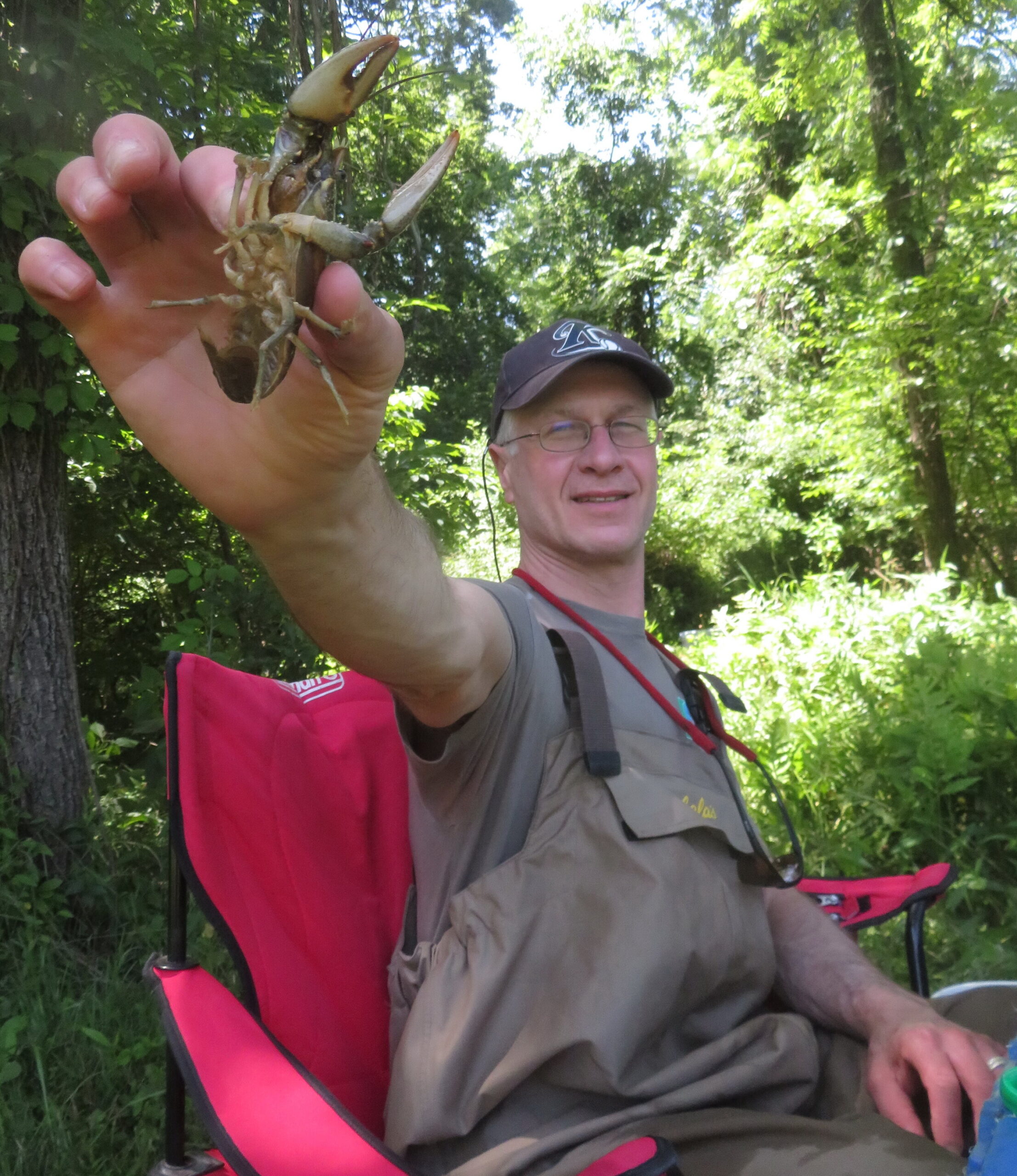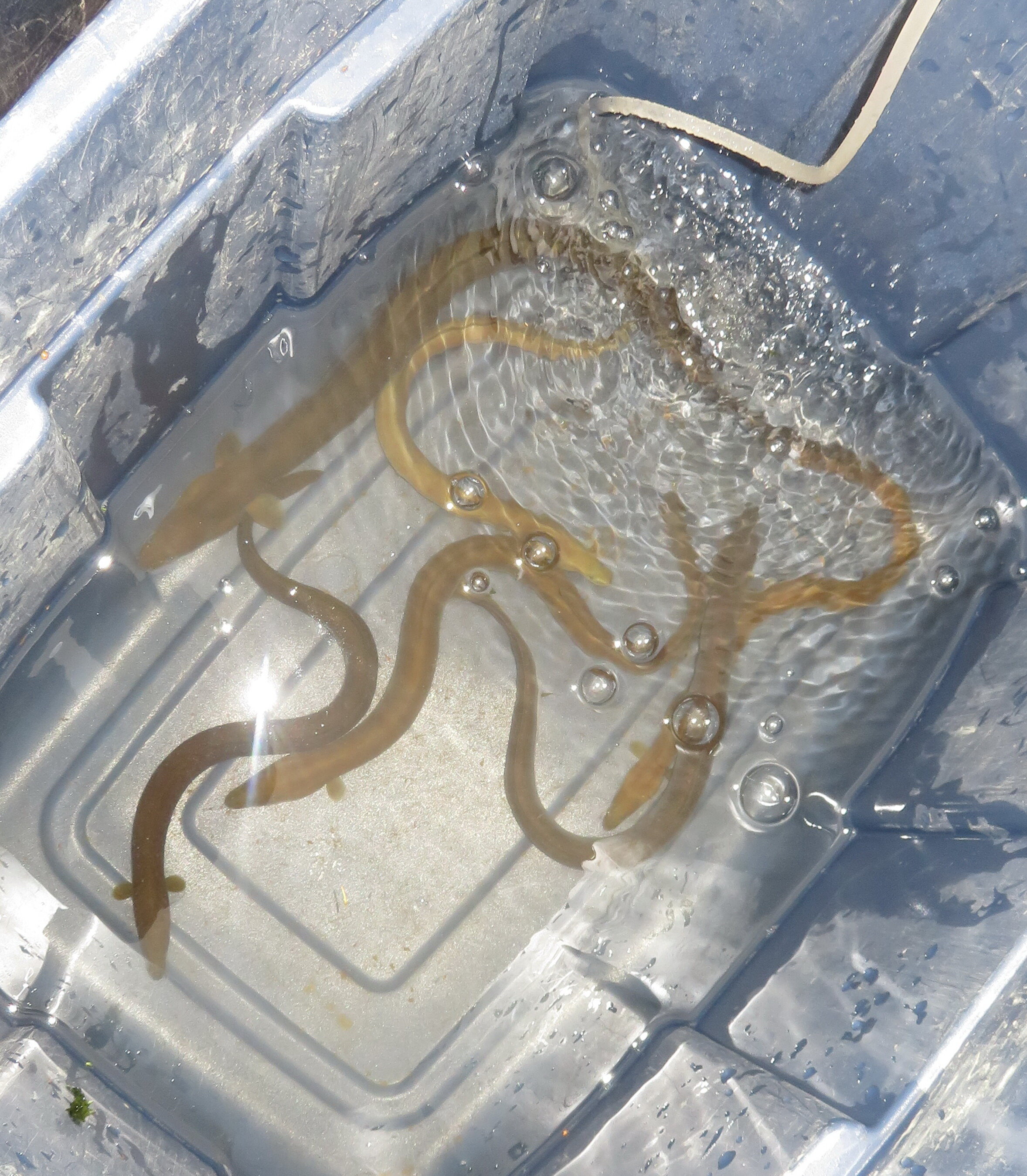In September, a red plastic storage tub brimming with eels made the trip from Frankford Creek in North Philadelphia to Pickering Creek in Chester County. The eels had been recruited as frontline fighters in the Delaware Valley’s war against invasive crayfish, and the fate of aquatic ecosystems throughout the region could depend on whether they hold the line.
Crayfish invasions might not strike fear into the hearts of many Philadelphians, but they should. The United States is home to more than 400 species of crayfish, many of them hyper-local. About half are, to some degree, imperiled, meaning they need conservation attention.

“They’re a really important link in the food web,” says David Lieb, an invertebrate zoologist with the Pennsylvania Fish & Boat Commission and the Pennsylvania Natural Heritage Program.
“Crayfish eat the little things,” Lieb continues, and in turn, they are eaten by the bigger critters of our waterways. “Maybe they’re not as charismatic as the otter, but if you don’t have the crayfish, you don’t have the otter.”
Unfortunately, crayfish can be their own worst enemies. Humans move crayfish around as fishing bait, food for animals or aquarium pets, often dumping them out into local waterways in a misguided act of mercy. The problem is that sometimes these misplaced crayfish out-compete the locals.
Lieb says there are five native species of crayfish in the Philadelphia area, including a yet-named species recently discovered in Valley Creek at Valley Forge. It is only found there and in a few neighboring creeks and tributaries. At one of the sites where Lieb studied this new species, he watched the virile crayfish, an invader from the Great Lakes region, completely displace the unnamed one.
“They’re very difficult to eliminate,” Lieb says of invasive crayfish.
It’s hard to wipe them out with pesticides without killing everything else in the water. Moreover, in running waters like rivers, lingering invasive crayfish from up- or downstream quickly move back into a cleared stretch.
So Lieb was excited when, along with senior scientists Erik Silldorff (of the Delaware Riverkeeper Network) and Richard Horwitz (of the Academy of Natural Sciences of Drexel University), he made an exciting discovery: Invasive crayfish don’t seem to get established in waterways inhabited by American eels.
“As soon as you get any kind of appreciable American eel numbers, you get zero, or almost zero, numbers of invasive crayfish,” explains Silldorff. “Once you have no or very few eels, the invasive crayfish can get a foothold.”
This correlation alone doesn’t prove that eels keep out the invasive crayfish.
“We thought, ‘Wouldn’t it be nice to do an experiment, take a place with no eels, introduce them and see if they wipe out the crayfish?’” says Horwitz. “This would give us a better sense that our hypothesis is right.”
Horwitz adds that this mechanism of controlling non-native crayfish would highlight the importance of restoring native eel populations.
American eels, like some of our native crayfish, are themselves in decline. These snake-shaped fish breed in the Sargasso Sea, a region of the North Atlantic, and then as youngsters drift with the currents, they find their way into rivers all along the Atlantic coast of North America.
After 10 to 25 years munching on crayfish and other critters in these rivers and creeks, the adults swim downstream to breed in the ocean. This complex, migratory life leaves eels vulnerable to a variety of threats, including dams. If young eels can’t make it upstream, a waterway will no longer have any eels. Eels are common in the free-flowing Delaware River, for example, but scarce in the Schuylkill above the Fairmount and Flat Rock dams.
American eels are also hard to find in Pickering Creek, a dammed tributary of the Schuylkill.
“One of the key reasons we chose Pickering is that no one has found an eel in there for decades,” says Silldorff. “It makes for a clean experimental design,” as the researchers track invasive crayfish abundance now that they have re-introduced the eels.
The researchers had an easy time finding eels in Frankford Creek (aka Tacony Creek), a heavily altered waterway abused by centuries of pollution.
“The Lower Tacony is one of the worst waterways you will ever see, largely because of combined sewer overflow,” says Horwitz. “The eels can handle it.”
According to him, about 500 Frankford Creek eels, many of them adults large enough to eat crayfish, were joined by hundreds of eels from other local creeks and by thousands of mostly young eels raised in a lab by study collaborator Heather Galbraith, a U.S. Geological Survey Research fish biologist.
If the eels can fight back the invasive crayfish, this experiment could help prove their importance to aquatic ecosystems all along the Atlantic Seaboard.
“They might be the key to the health of the river,” says Silldorff. “Without them, things fall apart.”









